Genre: Racing Developer: Magnetic Fields Ltd Publisher: Electronic Arts Players: 1-2 Released: 1993
Lotus II R.E.C.S. is the Sega Genesis port of the Amiga game Lotus III: Ultimate Challenge, with an additional R.E.C.S. (Race Environment Construction System). In the ’90s, Lotus Turbo Challenge was a very popular racing game series on the Amiga and Lotus II is a decent port of the third Lotus game. Basically, Lotus is just your standard straightforward racing game. There is only one available view – from behind the car – and all the obvious racing possibilities are present. There’s breaking, accelerating and, if you drive in manual transmission, shifting gear. Using the gear is very easy and most of the time you’ll just leave it stuck in its fifth. Furthermore, three different cars available, but the only real difference between them seems to be the color. Of course, there’s also a split-screen two-player mode in which two players compete in a race simultaneously.
Lotus II R.E.C.S. offers decent colorful graphics and varied scenery. There are thirteen different types of racing scenario’s available, which vary from the desert to snow and from roadworks to the beach. Each track has different obstacles, like trees and rocks, on or near the road to make it more challenging, but hitting an obstacle only slows you down a little. Two windy tracks (‘storm’ and ‘wind swept’) are available – on those circuits the control of your car is heavily influenced by the wind. Only the tunnels look a little gray and blank in comparison to the rest of the scenario. A letdown is the lack of a true pit lane. You can’t crash your car, but you can run out of fuel. If you do, you’ve to stop by a marker that says ‘pits’ to refuel the car. Unfortunately, all you do is stop the car and see the fuel bar growing back. You won’t see any pit lane or engineers.
New in comparison to the original Amiga game is the addition of R.E.C.S. (Race Environment Construction System). This option sounds very promising, but turns out to be the most disappointing aspect of the game. It isn’t really possible to ‘construct’ your own circuits, it’s only possible to ‘generate’ them. All you do is set a bunch of parameters (e.g. curves, obstacles, scenery) to high or low and the game automatically generates the track. Starting a newly generated track doesn’t always seem to work perfectly. All in all, the R.E.C.S. addition seems superfluous and isn’t much fun.
Besides decent graphics and decent controls, Lotus II has some of very catchy retro MIDI tunes. Before a race starts, a car radio is shown, just like in Sega’s OutRun. On this radio you can select whether you want to play the game with sound effects or with one of the four excellent MIDI soundtracks. Strangely enough it isn’t possible to play with music and sound effects turned on at the same time. Playing with only sound effects turns out to be a little boring. But playing with only music works well, because all four tracks are topnotch. It are all retro MIDI tracks that just makes you feel nostalgic and makes you wish you were back in the era of 16-bit gaming once more.
Overall, Lotus II R.E.C.S. is fun, but not very spectacular. The R.E.C.S. addition doesn’t add anything interesting and it’s strange it isn’t possible to play with music and sound effects at the same time. But the varied scenery, excellent music and fine two-player split-screen mode still make this a racer worth your time.
SCORE: 7 out of 10

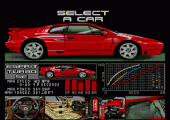
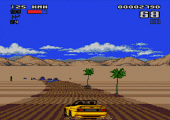
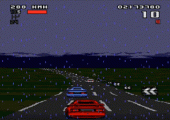
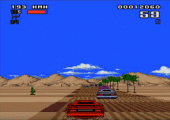
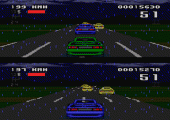
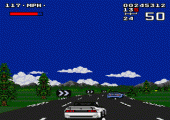
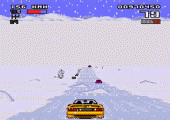
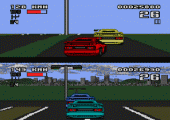

Recent Comments